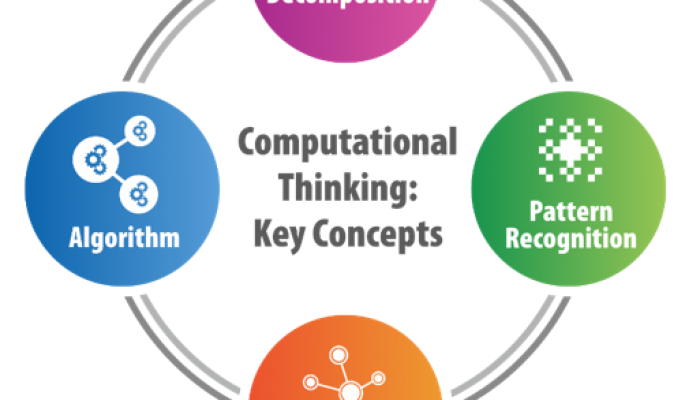Growing up I’ve always wanted to be a teacher. Life had other plans and I ended up working in the IT sector. When the opportunity came along to create content for CSPathshala, I was happy that I would be able to contribute to school going kids in a different way. Though I’ve never created content for anything before, I was quite confident and wondered how hard can it be to write a less ...[Read More]
Jaya Ramesh’s story – Journey as a Content Creator
“If you want to do something new, you have to STOP doing something OLD !”
Our journey with CS Pathshala. Peter Drucker, the great management expert and educator,once said “If you want to do something new, you have to STOP doing something OLD !” ..and that is just what we did at Global Public School, Kochi, Kerala this academic year 2017-18 . Global Public School, is a young twelve year old school, which constantly strives to implement learning to our student ...[Read More]
“Learn Computer Science without Computer”
It was at the beginning of the academic year 2015- 16 that we teachers at Vikhe Patil Memorial School were informed of a new initiative that was designed to make students think and learn Computer Science logically. Being extremely intrigued by it, a subsequent initiation session was conducted by Vipul Sir and his team in which they gave us more information about ACM and its mission and introduced ...[Read More]
Enriching CSpathshala Curriculum through valuable contribution from teachers
Paths to Creative and Adaptive Implementation of CSpathshala Curriculum Growing up we always enjoyed lessons taught by teachers who used various activities to explain concepts. Remember the Science teacher who taught us germination by planting those rajma and methi seeds in the paper glasses and we would water them daily waiting for them to sprout. The excitement amongst the students at every stag ...[Read More]
Giving back to the society, what I had achieved so far
My journey with CSpathshala began when my dear friend, Sharan, introduced me to the feeling of ‘giving back to the society, what I had achieved so far.’ Being a frequent visitor to Sharan’s house introduced me to her mom and one of the core members of CSpathshala – Sonia. As we spoke, I learnt more and more about the work that they were involved in and it was then that I re ...[Read More]
Experiences from the grassroots – Rural Schools, Sabarkantha, Gujarat
CSpathshala team visited schools from Idar, Prantij and Talod talukas of Sabarkantha which have the Computer labs and Digital Boards to enable implementation of the CSpathshala curriculum. The team conducted sessions for the students and teachers which included patterns, parity bit activity and solving 4×4 and 6×6 Sudoku using a systematic approach (algorithm) to solve one grid at a time ...[Read More]
Triangle Puzzle
Can you count the number of triangles in the given figure Solution: There are multiple solutions to solving the puzzle. Let us first number the vertices as shown. Using the approach of Problem Solving, first break down the problem into smaller parts -Decomposition. Let us begin with counting the number of triangles in three triangles – 1-2-10, 2-3-10 and 3-1-10. First consider 1-2-10: It ha ...[Read More]
Hour of Code – Dec 4-10, 2017
No matter what your students dream of, it is important, as a teacher, to prepare them for the future. Whether your students want to be doctors, engineers, professionals or entrepreneurs, chances are that computer science and programming can help them. Coding not only helps create apps, games and other products, it also helps individuals sharpen their problem solving and computational thinking skil ...[Read More]
Computational Thinking in K-12 Education
What is Computational Thinking? Computational Thinking is the process of formulating a problem, finding solution to the problem and expressing it in such a way that humans or machines can understand the solution. It involves the use of problem solving methods to decompose the problem into smaller manageable sub problems, identifying the right abstractions so as to deal with scale and complexity, f ...[Read More]
Fruits Puzzle
Puzzle: There are three boxes. One box contains only mangoes, one box contains only bananas, and the other box contains both mangoes and bananas. The boxes are labeled with fruit names ‘mangoes’, ‘bananas’ and ‘mangoes and bananas’. Unfortunately, a naughty child labeled all the boxes incorrectly. If you are allowed to take one fruit from a box of your choice, w ...[Read More]

